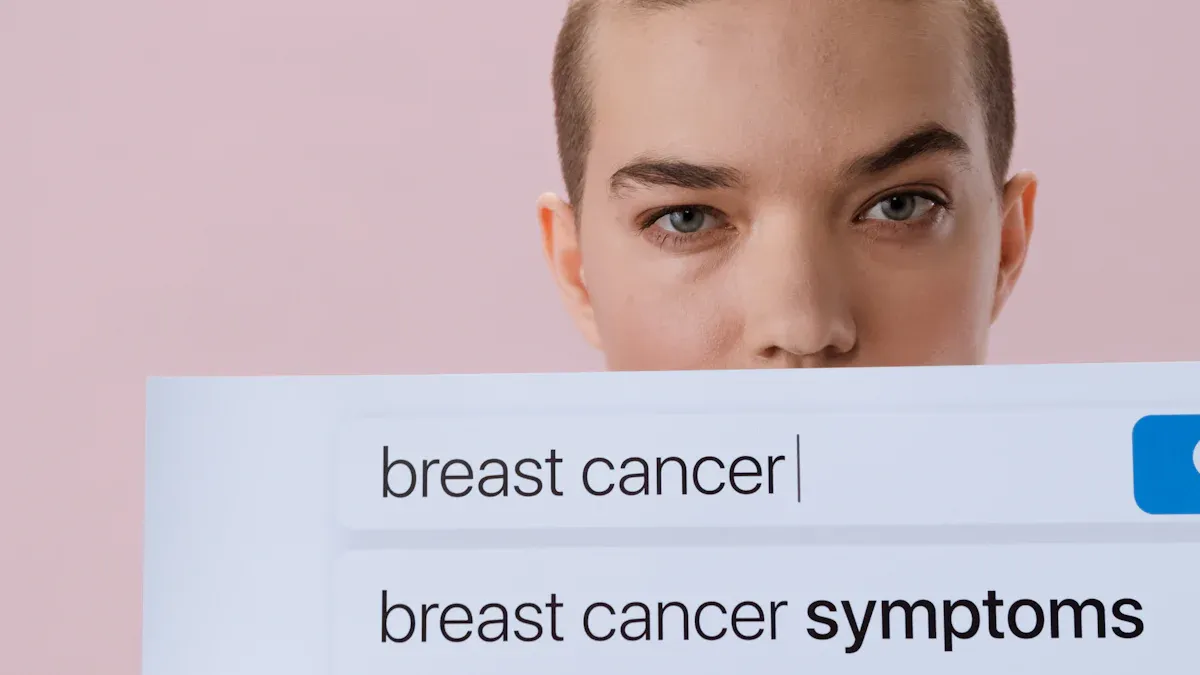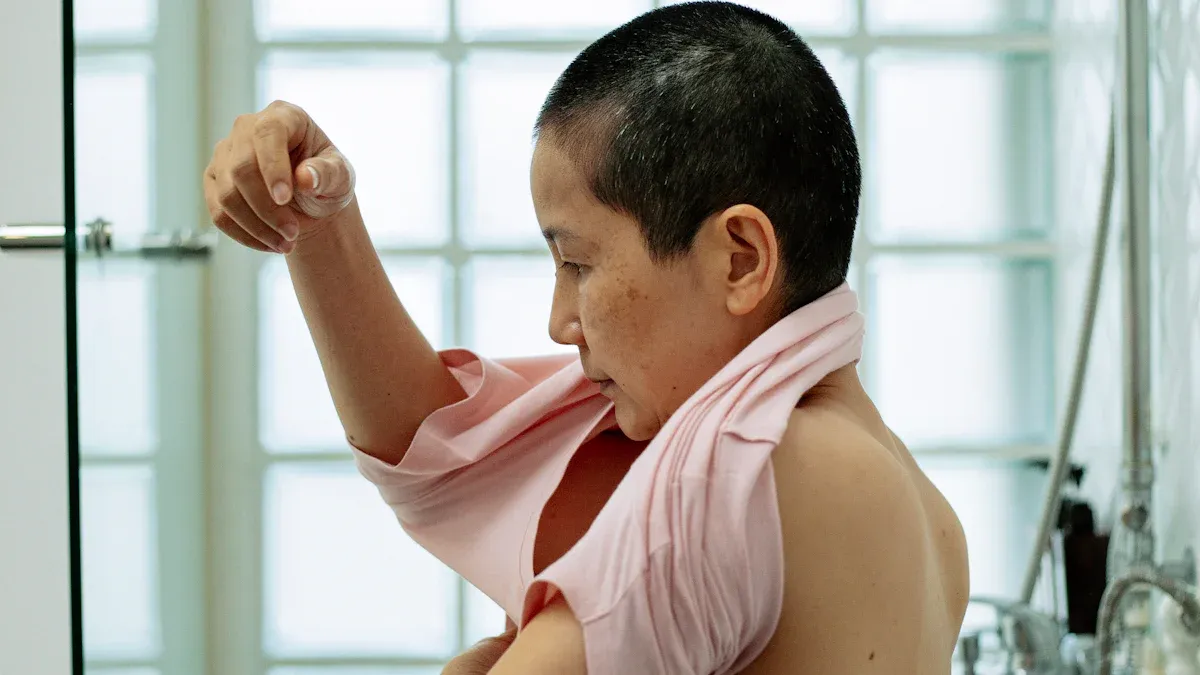Can Men Develop Cancers Commonly Associated with Women

Do Only Women Get Certain Cancers? The Truth About Cancer in Men might surprise you. While many people assume cancers like breast cancer only affect women, that’s not entirely accurate. Men can also develop these cancers due to shared biological factors such as hormones and genetics. For instance, research indicates that men with breast cancer are more likely to carry genetic mutations like BRCA2 compared to women. In fact, nearly 58% of male breast cancer cases involve BRCA2 mutations, whereas BRCA1 mutations are much less common. These genetic predispositions, along with hormonal imbalances, highlight that cancer doesn’t discriminate based on gender. Raising awareness and focusing on early detection are crucial for better outcomes.
Do Only Women Get Certain Cancers? The Truth About Cancer in Men emphasizes the importance of understanding your risks and staying attuned to your body—it can truly make all the difference.
Key Takeaways
Men can get breast cancer, but it doesn’t happen often. Knowing this helps find it early.
Genes like BRCA mutations make cancer risk higher for men. Regular check-ups can help catch it sooner.
Healthy habits, like staying fit and drinking less alcohol, lower cancer chances. Small steps can improve health a lot.
Spotting signs early, like lumps or skin changes, is important. Finding cancer early makes treatment work better.
Talking to your doctor about family history can show risks. This helps make a plan to prevent cancer.
Do Only Women Get Certain Cancers? The Truth About Cancer in Men

Breast Cancer in Men
How It Develops
You might not realize it, but men have breast tissue too. Although it’s less developed than in women, this tissue can still undergo changes that lead to cancer. Breast cancer in men often starts in the ducts, the tiny tubes that carry milk in women. Hormonal imbalances, especially elevated estrogen levels, can trigger abnormal cell growth in this tissue. Over time, these cells may form a tumor.
Genetic mutations also play a big role. If you carry BRCA1 or BRCA2 mutations, your risk of developing breast cancer increases significantly. These mutations interfere with your body’s ability to repair damaged DNA, which can lead to cancer.
Statistics and Prevalence
Breast cancer in men is rare, but it’s not unheard of. According to studies, male breast cancer accounts for less than 1% of all breast cancer cases. However, the numbers are rising. In 2002, cancer incidence rates for women under 50 were 51% higher than for men. By 2021, this gap widened to 82%, largely due to increasing breast cancer rates in women. While men’s rates remain low, awareness is crucial. Early detection can make a huge difference in treatment outcomes.
Other Rare Cancers in Men
Male Breast Tissue and Cancer Risk
You might wonder why men are at risk at all. The answer lies in biology. Male breast tissue, though minimal, is still susceptible to hormonal changes and genetic factors. Conditions like gynecomastia, where male breast tissue enlarges, can increase your risk. Lifestyle factors, such as obesity and alcohol consumption, also contribute by altering hormone levels.
Comparisons to Female-Specific Cancers
While breast cancer is often associated with women, men face unique challenges. For example, male breast cancer is diagnosed later on average, partly because it’s so unexpected. This delay can lead to worse outcomes. Unlike women, men don’t undergo routine breast cancer screenings, which makes early detection harder.
Tip: If you notice any unusual changes in your chest area, like lumps or swelling, don’t ignore them. Early action can save lives.
Risk Factors for Men
Genetic Predispositions
BRCA1 and BRCA2 Mutations
You might think genetic mutations like BRCA1 and BRCA2 only affect women, but that’s not true. These mutations can significantly increase your risk of developing cancers, including breast cancer. BRCA2 mutations, in particular, are more common in men with breast cancer. These mutations disrupt your body’s ability to repair damaged DNA, which can lead to abnormal cell growth. If you know you carry these mutations, regular screenings and genetic counseling can help you stay ahead of potential risks.
Family History of Cancer
Your family history plays a big role in your cancer risk. If close relatives, like your parents or siblings, have had breast or ovarian cancer, your chances of developing similar cancers increase. This is especially true if those relatives carried BRCA mutations. Knowing your family’s medical history can help you and your doctor create a personalized plan for monitoring and prevention.
Hormonal and Biological Factors
Elevated Estrogen Levels
Hormones like estrogen aren’t just a concern for women. Elevated estrogen levels in men can increase your risk of breast cancer. Factors like obesity, liver disease, or certain medications can cause these hormonal imbalances. Keeping your hormone levels in check through a healthy lifestyle can reduce your risk.
Conditions Like Gynecomastia
Gynecomastia, or the enlargement of male breast tissue, might seem harmless, but it can signal underlying hormonal issues. This condition often results from elevated estrogen or reduced testosterone levels. While gynecomastia itself isn’t cancerous, it can increase your risk of developing breast cancer. If you notice changes in your chest area, it’s worth discussing with your doctor.
Lifestyle and Environmental Influences
Obesity and Hormone Production
Obesity doesn’t just affect your appearance; it impacts your cancer risk too. Excess fat tissue produces estrogen, which can lead to hormonal imbalances. Obese men face a 50% higher risk of colon cancer and a 25% higher risk of rectal cancer. Maintaining a healthy weight can lower these risks and improve your overall health.
Alcohol and Cancer Risk
Drinking alcohol might seem harmless, but it can increase your cancer risk. Moderate to heavy alcohol consumption raises your chances of developing colorectal cancer. It’s also linked to other cancers, like liver and esophageal cancer. Cutting back on alcohol can make a big difference in reducing your risk.
Tip: Small changes, like eating a balanced diet and limiting alcohol, can have a big impact on your health. Prevention starts with the choices you make every day.
Symptoms and Diagnosis
Recognizing Symptoms
Breast Cancer Symptoms in Men
You might think breast cancer symptoms are easy to spot, but they can be subtle in men. The most common sign is a lump or swelling in the breast tissue. This lump is often painless, which makes it easy to overlook. Other symptoms include changes in the skin, like redness, dimpling, or flaky patches. You might also notice nipple changes, such as inversion, scaling, or even discharge.
Here’s a quick breakdown of symptoms to watch for:
Symptom | Description |
|---|---|
Lump or swelling in the breast | A noticeable mass in the breast tissue. |
Redness or flaky skin in the breast | Changes in skin texture or color. |
Irritation or dimpling of breast skin | Alterations in the surface of the breast skin. |
Nipple discharge | Fluid leaking from the nipple. |
Pulling in of the nipple or pain in the nipple area | Changes in nipple position or discomfort. |
If you notice any of these signs, don’t ignore them. Early detection can make a huge difference in treatment outcomes.
General Cancer Warning Signs
Cancer doesn’t always announce itself loudly. You might experience fatigue, unexplained weight loss, or persistent pain. These symptoms aren’t specific to breast cancer but could signal other types of cancer. Pay attention to your body and consult a doctor if something feels off.
Diagnostic Methods
Imaging Tests and Biopsies
Doctors use imaging tests like mammograms and ultrasounds to examine breast tissue. These tests help identify abnormalities, such as lumps or unusual growths. If imaging reveals something suspicious, a biopsy is the next step. During a biopsy, a small tissue sample is taken and analyzed for cancer cells.
Genetic Testing for High-Risk Individuals
If you have a family history of cancer or carry BRCA mutations, genetic testing can provide valuable insights. This test identifies whether you have inherited mutations that increase your cancer risk. Knowing your genetic profile helps you and your doctor create a personalized plan for monitoring and prevention.
Tip: Don’t wait for symptoms to worsen. Early diagnosis saves lives.
Treatment Options for Men
Standard Treatments
Surgery and Mastectomy
Surgery is often the first step in treating male breast cancer. If you’re diagnosed early, a mastectomy—removing the breast tissue—might be recommended. This procedure helps eliminate cancerous cells and reduces the risk of recurrence. Surgeons aim to remove the tumor while preserving as much healthy tissue as possible.
For some men, surgery alone may be enough. However, if the cancer has spread, additional treatments like chemotherapy or radiation might follow. Always discuss your options with your doctor to find the best approach for your situation.
Chemotherapy and Radiation
Chemotherapy uses powerful drugs to kill cancer cells. It’s often recommended if the cancer has spread beyond the breast tissue. Radiation therapy, on the other hand, targets specific areas with high-energy rays to destroy cancer cells.
Both treatments have proven effective. For example, studies show that combining therapies can significantly improve survival rates. In one study, nearly 90% of patients who received a combination of androgen deprivation therapy and pelvic lymph node radiation kept their cancer at bay for five years. Without this combination, the survival rate dropped to 70%.
Tip: Don’t hesitate to ask your doctor about the side effects of these treatments. Knowing what to expect can help you prepare and manage them better.
Hormone Therapy
How It Works for Men
Hormone therapy targets hormones like estrogen that fuel cancer growth. For men, this often involves medications that block estrogen or reduce its production. These treatments slow the cancer’s progression and can even shrink tumors.
Differences from Female Treatments
While hormone therapy works similarly for men and women, the dosages and medications may differ. Men typically have lower estrogen levels, so treatments are tailored to their unique hormonal balance. Your doctor will customize your therapy to ensure it’s both safe and effective.
Challenges in Male Cancer Treatment
Rarity of Cases
Male breast cancer is rare, which can make finding specialized care a challenge. Many treatment protocols are based on studies involving women, so doctors may need to adapt these guidelines for men.
Adjustments for Male Physiology
Men’s bodies respond differently to treatments like hormone therapy. For instance, side effects such as reduced testosterone levels may require additional management. Despite these challenges, survival rates for men receiving standard treatments are comparable to those for women.
Treatment Group | 5-Year Survival Rate | Recurrence Rate | Urinary Problems | Bowel Problems |
|---|---|---|---|---|
SBRT | 95% | Not worse than standard therapy | 27% | <1% |
Standard Therapy | 95% | Not worse than SBRT | 18% | <1% |
Note: Early detection and personalized treatment plans can make a huge difference. Don’t delay seeking medical advice if you notice unusual symptoms.
Prevention and Risk Reduction

Healthy Lifestyle Choices
Maintaining a Balanced Diet and Weight
Your lifestyle choices play a huge role in reducing your cancer risk. Maintaining a healthy weight is one of the most effective ways to protect yourself. Being overweight or obese can lead to inflammation and create an environment where cancer cells thrive. Regular exercise is another key factor. Aim for 150 to 300 minutes of moderate activity each week. This could be as simple as brisk walking, cycling, or even dancing.
What you eat matters too. A diet rich in plant-based foods, especially non-starchy vegetables and fruits, provides phytonutrients that help prevent cancer cell growth. Think of colorful options like spinach, carrots, and berries. These small changes can make a big difference in your overall health.
Benefits of a healthier lifestyle:
Reduces inflammation linked to cancer.
Lowers the risk of cancer cell growth.
Provides essential nutrients to fight disease.
Reducing Alcohol Consumption
Cutting back on alcohol is another smart move. Alcohol increases your risk of several cancers, including liver and colorectal cancer. Even moderate drinking can have harmful effects. If you drink, try to limit your intake to no more than two drinks per day. Reducing alcohol not only lowers your cancer risk but also improves your overall well-being.
Tip: Start small. Swap sugary or alcoholic drinks for water or herbal teas. Your body will thank you!
Genetic Counseling and Testing
Importance of BRCA Testing
If cancer runs in your family, genetic testing can be a game-changer. Programs for BRCA1 and BRCA2 testing help identify your risk early. Men with these mutations have access to proactive detection methods and effective treatments. Unfortunately, testing rates for men are much lower than for women, even though men face a higher lifetime cancer risk.
Monitoring for High-Risk Men
Genetic counseling doesn’t just stop at testing. It helps you understand your results and create a personalized prevention plan. If you’re high-risk, regular screenings and lifestyle adjustments can significantly improve your outcomes.
Genetic testing enhances early detection and prevention strategies.
Men with BRCA mutations benefit from more effective treatments.
Testing rates for men remain disproportionately low, highlighting the need for awareness.
Regular Health Screenings
Early Detection Benefits
Regular health screenings are vital for catching cancer early. Men with BRCA mutations, for example, have more options for early detection. This leads to better outcomes and access to effective treatments. Increased awareness of your risks can make all the difference.
Discussing Family History with a Doctor
Your family history is a powerful tool. Share it with your doctor to identify potential risks and determine if genetic testing is right for you. Physicians can guide you toward the right screenings and help you stay ahead of any potential issues.
Evidence Description | Outcome |
|---|---|
Men with BRCA1 or BRCA2 mutations have more options for early cancer detection. | Improved early detection rates and more effective treatments available. |
Increased awareness of cancer risks leads to earlier detection. | Better outcomes for men participating in screening programs. |
Current testing rates for men are significantly lower than for women. | Highlighting the need for increased genetic screening among men to improve detection rates. |
Encouragement from physicians can help men understand their cancer risk. | Identification of risk factors and recommendations for genetic testing can lead to earlier detection. |
Note: Don’t wait for symptoms to appear. Regular check-ups and open conversations with your doctor can save lives.
Men can develop cancers often associated with women, like breast cancer, even though these cases are rare. Understanding your risk factors and recognizing symptoms early can make a huge difference. Early diagnosis improves survival rates significantly. For example:
The 5-year survival rate for cancers like thyroid and prostate exceeds 95% due to early detection.
Overall cancer survival rates have risen from 49% in the 1970s to 69% in recent years, thanks to proactive health management.
Awareness and timely medical intervention are crucial. Research shows that male breast cancer can differ genetically from female cases, affecting treatment outcomes. If you notice unusual symptoms or have a family history of cancer, don’t wait. Talk to your doctor. Proactive steps, like regular screenings and understanding your genetic risks, can save lives.
FAQ
Can men really get breast cancer?
Yes, men can develop breast cancer. Although it’s rare, it happens because men also have breast tissue. Hormonal imbalances, genetic mutations like BRCA2, and lifestyle factors can increase your risk. If you notice any unusual changes in your chest area, consult your doctor.
What are the early signs of breast cancer in men?
Look for a painless lump in your chest, nipple discharge, or changes in the skin, like redness or dimpling. Nipple inversion or scaling can also be warning signs. If you spot any of these, don’t wait—early detection saves lives.
Should men get tested for BRCA mutations?
If you have a family history of breast or ovarian cancer, testing for BRCA mutations is a smart move. It helps you understand your risk and take preventive steps. Genetic counseling can guide you through the process and create a personalized plan.
How can men reduce their cancer risk?
Adopt a healthy lifestyle. Maintain a balanced diet, exercise regularly, and limit alcohol. If you’re overweight, losing weight can lower your risk. Regular health check-ups and discussing your family history with your doctor are also key steps.
Are treatments for male breast cancer different from women’s?
The treatments are similar but tailored to men’s physiology. Surgery, chemotherapy, radiation, and hormone therapy are common options. However, doctors adjust dosages and approaches to suit men’s unique hormonal and physical needs.
Tip: Always ask your doctor about treatment options and side effects to make informed decisions.
See Also
Exploring Cancer Types Associated With AIDS Infection
Identifying Symptoms Associated With Male Breast Cancer
Understanding Lung Adenocarcinoma Causes and Risk Factors
